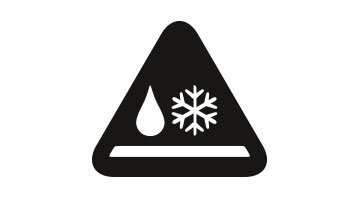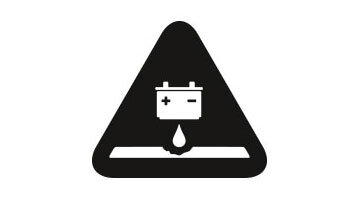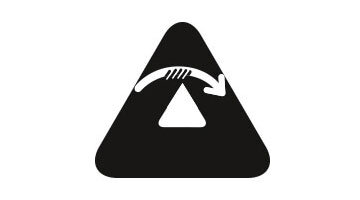Make sure you know your facts. To protect your climbing rope, it's important to be aware of the potential risks. Here are some of the factors that can seriously damage a rope.

UV radiation from the sun has a significant effect on climbing ropes, as it does on most things in life. UV radiation causes colors to fade and accelerates ageing. Prolonged exposure to the sun will cause a rope to lose elasticity and become stiff. This is why climbing ropes should not be exposed to the sun unnecessarily. It is particularly bad to dry your rope in full sunshine after it has got wet in the rain or after washing. You'll often find old, faded webbing and rope slings at belays or to protect difficult sections. They should be used with caution.

The effect of moisture on a climbing rope should not be underestimated. Wet ropes are not only heavier and more difficult to handle, they also have less ability to absorb energy dynamically. Should temperatures plummet, and a wet rope start to freeze, it will have significantly lower safety reserves. This applies to ice climbing, fixed ropes, high-alpine use or glacier crossings and also to sudden extreme changes in weather. Impregnated ropes are more capable of dealing with such conditions. They are water resistant and can withstand the wet and the cold longer.

Dirty ropes don't just look shabby, they are also more complicated to handle. They become stiff and awkward. This is why climbing ropes should not lie in the dirt or be dragged about on the floor of a climbing wall. Instead you should use a rope bag. Sand and granite crystals can be particularly dangerous. They can work their way inside the rope and damage the core. If a rope has got exceptionally dirty, it might not be possible to clean it properly, even after several washes. In such cases, the rope should be replaced. Tests conducted by EDELRID have also shown that chalk contamination can also be a significant, although underestimated cause of abrasion. Excessive chalking can lead in particular to the first meter of a rope being coated in powdered magnesium. Ropes affected in this manner do not perform as well during testing – i.e. they withstand significantly fewer load cycles.

Keep your rope away from chemicals, in particular strong acids, as they can destroy a rope. Acid damage can be especially dangerous as it is often invisible. The sheath might be only slightly discolored, but the rope's core could be destroyed. If a rope comes into contact with acids (e.g. acid from car batteries), it should be replaced immediately. Ropes should always be stored and transported carefully. This applies in particular should your ropes, like so many other things in life, get stored in the car boot or the garage. Think carefully about where you store them and keep them away from acidic chemicals.

Extreme friction can cause so much heat that the polyamide yarns in a climbing rope can start to melt. This happens in particular when ropes rub against one another. It is particularly dangerous if two ropes are routed through the same anchor point as this can result in a major fall. Lowering from a webbing or sling anchor instead of a fixed, metal anchor can also be exceptionally dangerous. It makes sense to take extra care when climbing at popular venues and on routes with poor protection, for example where threads and slings are used at the lower--off. Rappelling also causes friction and can heat up the belay device significantly. This should not be underestimated. Friction burns are recognizable by glassy or blackened areas on the sheath. The rope will be stiffer and have an unusually hard surface at these points.

Sharp rock edges can be very dangerous. They can damage a climbing rope so badly that it may fail, especially in the event of a fall. This is why good rope management is important, to avoid any sharp edges. Stonefall and or a misplaced blow from an ice axe can also seriously damage a rope. In the best-case scenario you might get away with a damaged sheath, in the worst case the core might be damaged. If this is the case, you should not climb on and retire the rope.

Abrasion is one of a rope's worst enemies. Rock, carabiners and belay devices can all be a major source of friction and cause wear and abrasion along the whole length of the rope. The individual sheath fibres tear and the sheath's surface gets rougher. As a result, the sheath gets thinner, and the rope becomes rough and furry. Once the core becomes visible, the end is nigh. The greater the load, the rougher the rock and the sharper the edges, the more the sheath will be damaged. Climbing on fractured rock, quartzite sandstone or sharp granite can accelerate this process. Frequent rappelling and top-roping can also accelerate ageing far more than climbing a rope without loading it.
